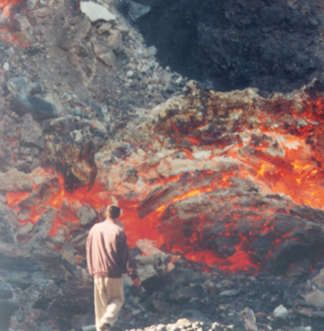
Underground coal fires called a 'catastrophe'
Saturday, February 15, 2003
By Michael Woods , Post-Gazette National Bureau
DENVER -- ... a more common coal mine disaster is getting little attention, scientists said yesterday. It's the fire below.
Underground coal fires are relentlessly incinerating millions of tons of coal around the world.
The blazes spew out huge amounts of air pollutants, force residents to flee their homes, send toxic runoff flowing into waterways, and leave the land above as scarred as a battlefield.
"A global environmental catastrophe" is how geologist Glenn B. Stracher described the situation.
Stracher, of East Georgia College in Swainsboro, organized an international symposium on the topic at the annual meeting of the American Association for the Advancement of Science.
"This symposium is dedicated to disclosing the severity of the coal fires problem," Stracher said, noting that some of the fires have been burning for centuries with few people aware of the problem.
Concern and action is needed, he said, because of the environmental impact -- especially of mega-fires burning in India, China and elsewhere in Asia. One coal fire in northern China, for instance, is burning over an area more than 3,000 miles wide and almost 450 miles long.
"The direct and indirect economic losses from coal fires are huge," said Paul M. van Dijk, a Dutch scientist who is tracking the Chinese blazes via satellite.
He estimated that the Chinese fires alone consume 120 million tons of coal annually. That's almost as much as the annual coal production in Pennsylvania, Ohio, and Illinois combined.
The Chinese fires also make a big, hidden contribution to global warming through the greenhouse effect, scientists said. Each year they release 360 million tons of carbon dioxide into the atmosphere, as much as all the cars and light trucks in the United States.
Soot from the fires in China, India and other Asian countries are a source of the "Asian Brown Haze." It's a 2-mile thick cloud of soot, acid droplets and other material that sometimes stretches across South Asia from Afghanistan to Sri Lanka.
The cloud causes acid rain that damages crops, cuts sunlight reaching the ground by 10 to 15 percent, and has been implicated in thousands of annual lung disease deaths.
Mine fires are frustratingly difficult and costly to extinguish, panelists said.
Weapons range from backfilling mine shafts to cutting off the oxygen supply with a new foam-like grout that's squirted into mine shafts like shaving cream and then expands to sniff out the fire.
Most are simply left alone to burn until they eventually exhaust their fuel supply.
Michael Woods can be reached at mwoods@nationalpress.com
